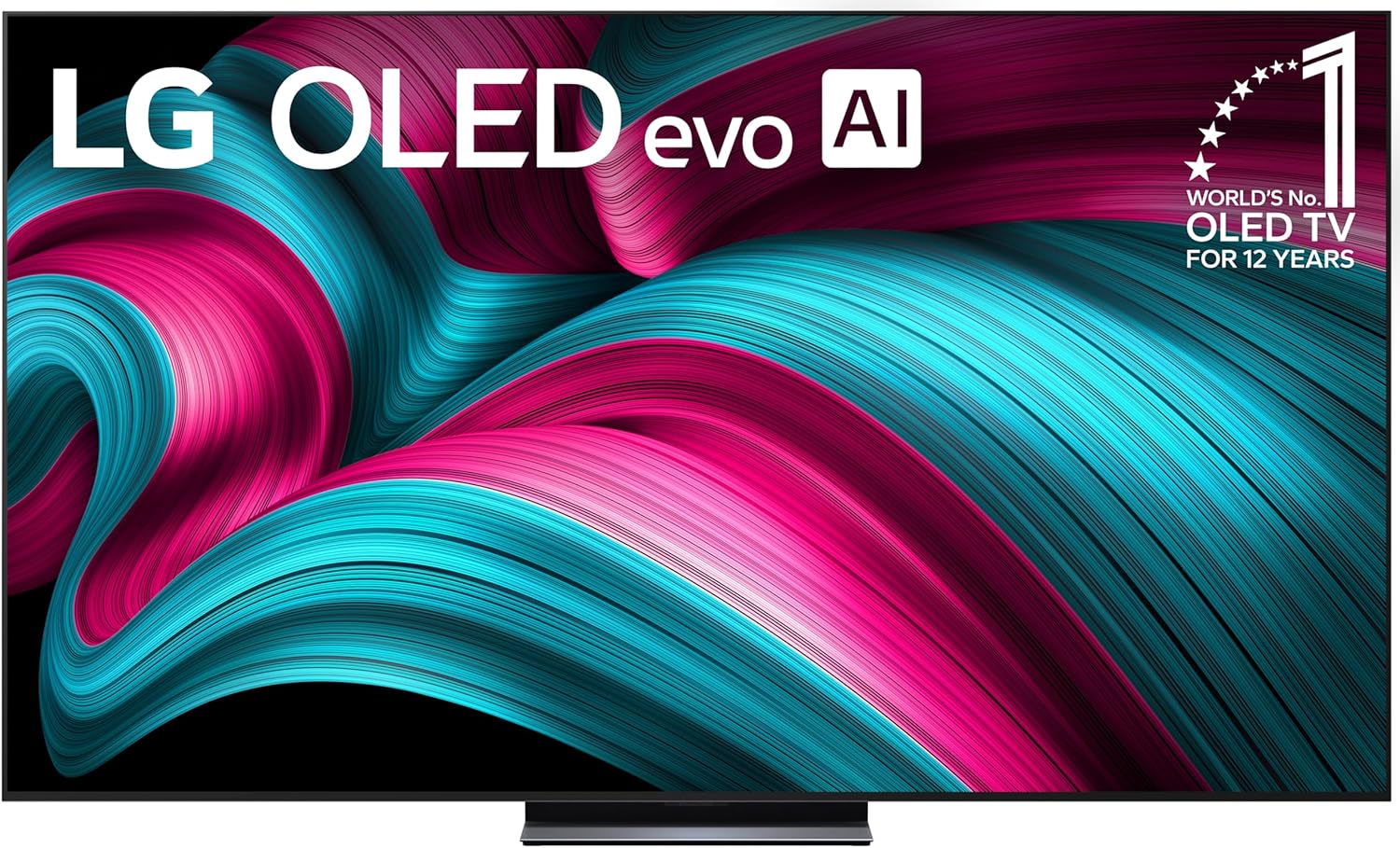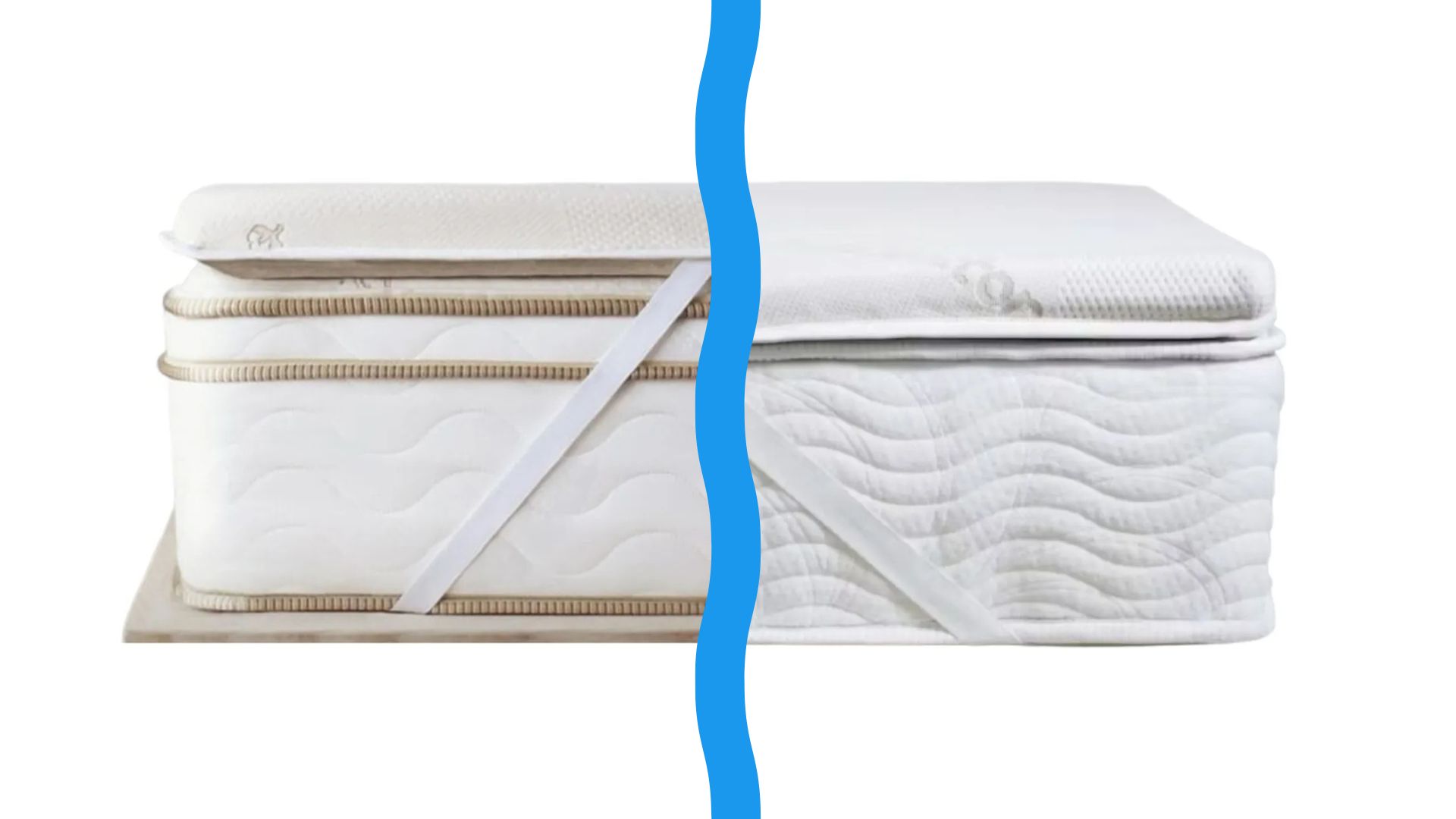LG C5 vs TCL QM8K — the OLED vs Mini-LED shoot-out
Is the value OLED or the flagship Mini-LED TV the right buy?
LG's C-series has, year after year, proven itself as the best bang for your buck when it comes to OLED TVs. For that reason, among many others, the LG C5 OLED TV is one of the best OLED TVs you can buy right now.
But TCL is known for its budget displays, too, and the 65-inch TCL QM8K Mini-LED TV — its flagship model in 2025 — comes in at just $1,597. That's just $100 more than the 55-inch C5 OLED.
So which one should you buy? There's a lot to unpack when pitting the LG C5 vs the TCL QM8K. Here's how the two stack up and if it's worth shelling out a bit more for the OLED vs its Mini-LED counterpart.
LG C5 vs TCL QM8K: Specs compared
| Header Cell - Column 0 | LG C5 | TCL QM8K |
|---|---|---|
Sizes | 42", 48", 55", 65", 77", 83" | 65", 75", 85", 98" |
Ports | 4x HDMI 2.1 | 2x HDMI 2.1, 2x HDMI 2.0 |
Resolution | 3,840 x 2,160p | 3,840 x 2,160p |
Refresh rate | 144Hz | 144Hz |
HDR | Dolby Vision, HDR10, HLG | Dolby Vision IQ, HDR10+, HDR10, & HLG |
Smart TV software | webOS | Google TV |
ATSC 3.0 support? | No | Yes |
Processor | Alpha a9 Gen8 | AiPQ Pro Processor |
LG C5 vs TCL QM8K: Design
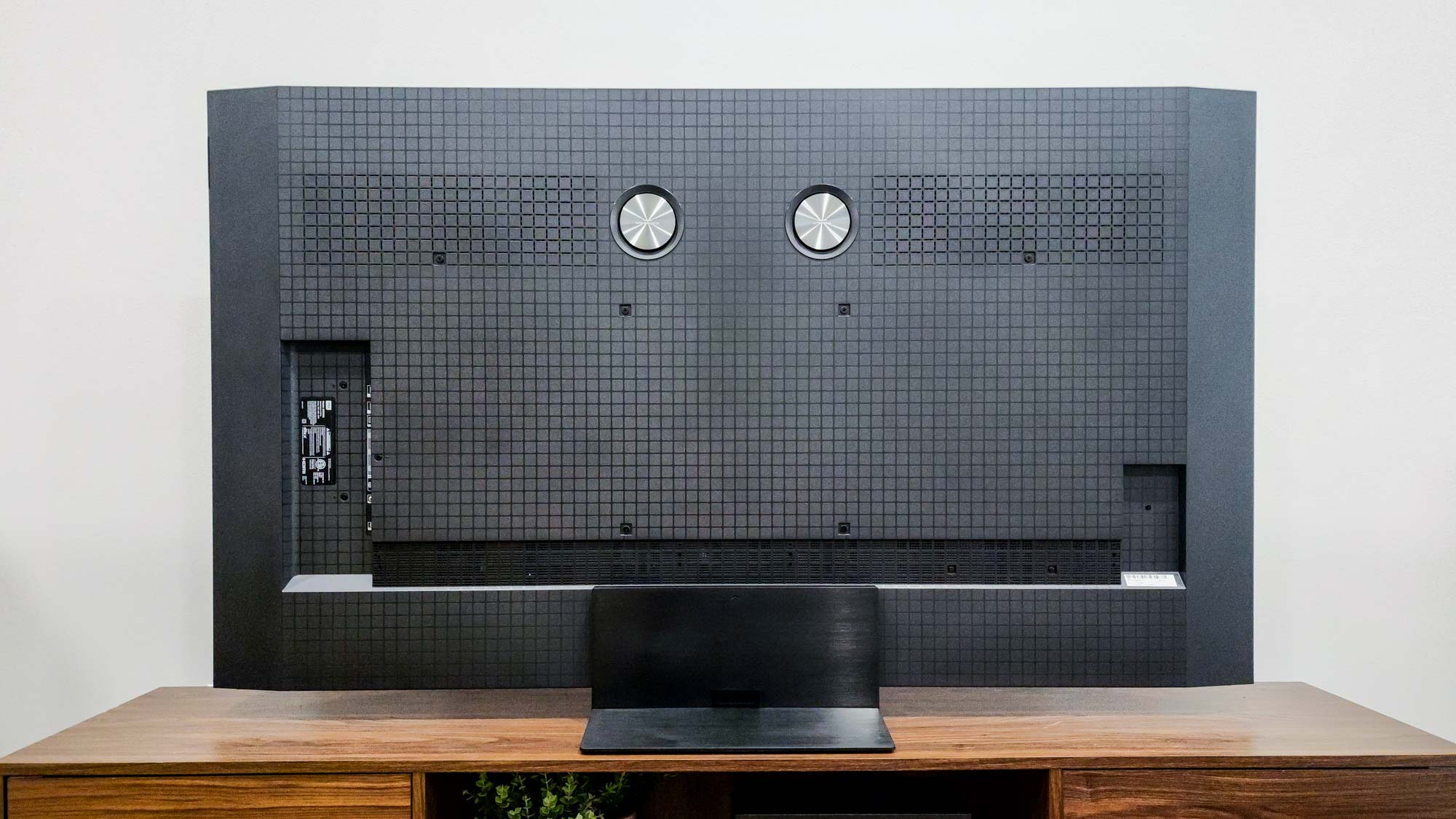
Design-wise, the QM8K and LG C5 couldn't be farther apart. They're built on two completely different panels and screen types, with the QM8K using an LCD screen with Mini-LED backlighting and the C5 running on LG's WOLED panel.
Through these variances, you can also infer several aspects that make or break your decision when deciding between the LG C5 vs the QM8K. The biggest one is size and weight, as the OLED will be much thinner and less bulkier than its Mini-LED counterpart.
In fact, the LG C5 OLED weights 10lbs lighter than the QM8K at 36.6lbs. Luckily, they both share a similar pedestal stand in the 65-inch configuration, which is sturdy enough and can fit on most surfaces.
If you're worried about your sunny room becoming a problem, the QM8K might be the better option as it's equipped with an anti-glare coating. The C5 unfortunately doesn't have one, unlike the flagship LG G5 OLED TV, but LG does claim its "Bright Room Ready" feature diminishes glare just as well.
Get instant access to breaking news, the hottest reviews, great deals and helpful tips.
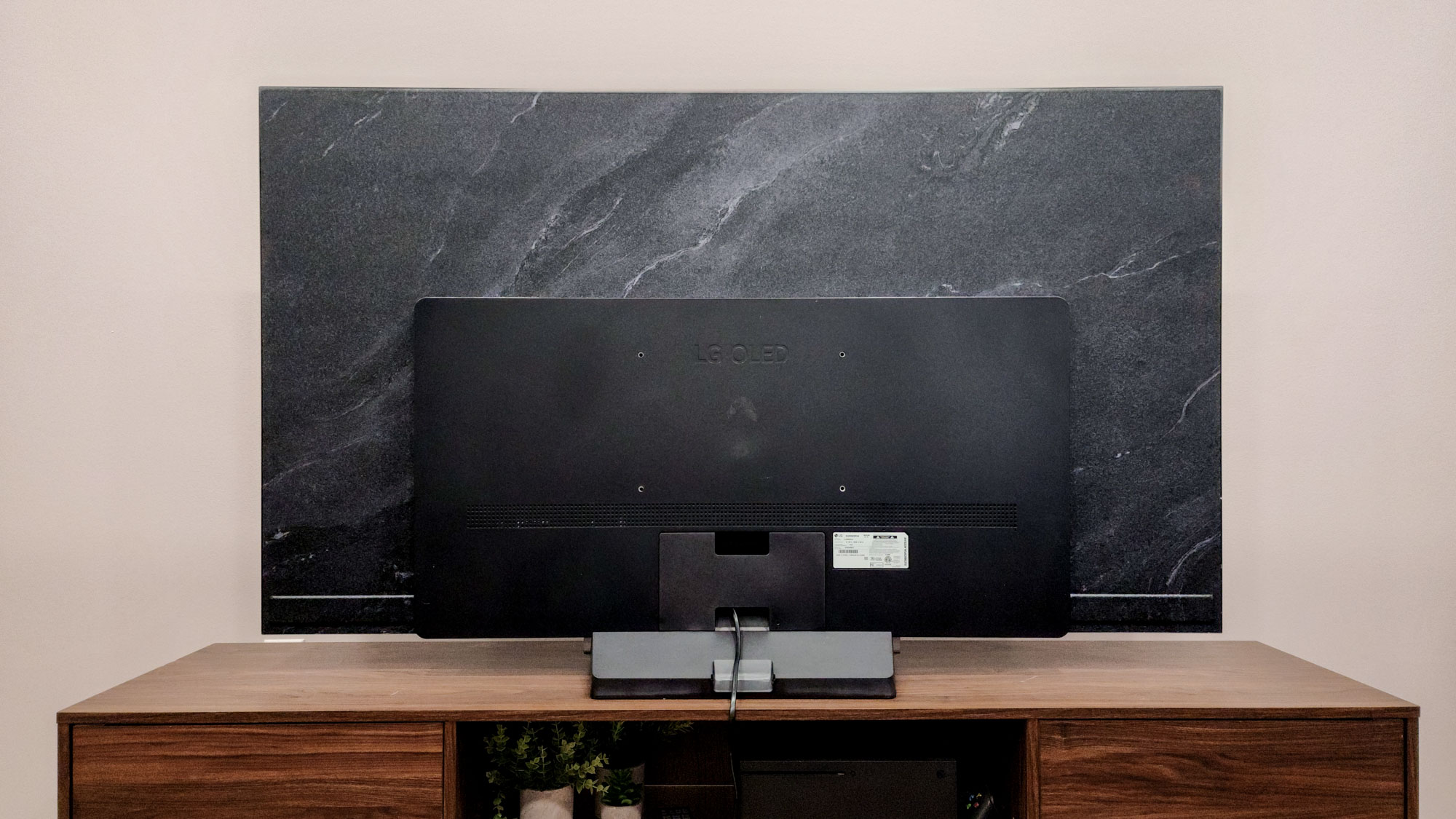
One of the major downsides against the QM8K TV is its lack of extra HDMI 2.1 ports. That's a real shame. TCL aims to make the QM8K the gamers' TV with tons of gaming features but that's hard to do with so few HDMI 2.1 ports. Meanwhile, the LG C5 has a total of four HDMI 2.1 ports, which means you have more options to choose from even if you're connecting an eARC compatible soundbar, like the Sonos Arc Ultra.
In terms of remotes, LG always proves the weakest link. The magic remote is an annoying gimmick that turns the clicker into a digital pointer. It's very annoying to use, but I still have to give LG some props for the redesign of its remote for 2025, as it's now less bulky and far easier to handle.
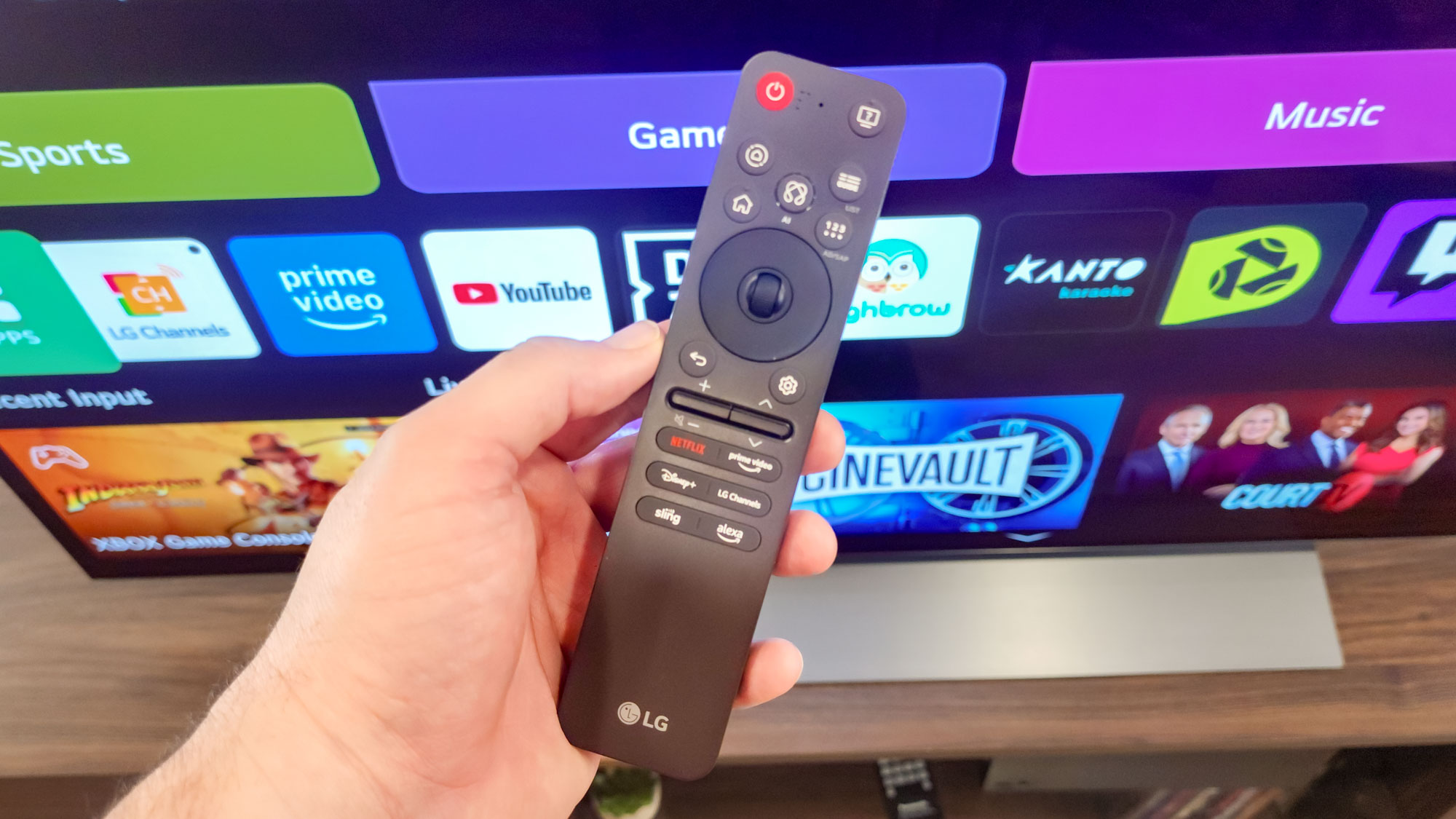
That being said, it's still not perfect. There's no dedicated input button on the remote, just one that acts as an all-encompassing smart home hub. Plus, with the select button in the center also serving as a scroll wheel, I tend to fudge the control and scroll all across the screen when I'm just trying to open an app.
No matter the case, both TVs will look just as good on a wall or stand in your living room. This really comes down to if you'd rather have a thin and light TV or something a bit heavier sitting on the wall of your house.
Winner: Draw
LG C5 vs TCL QM8K: Performance
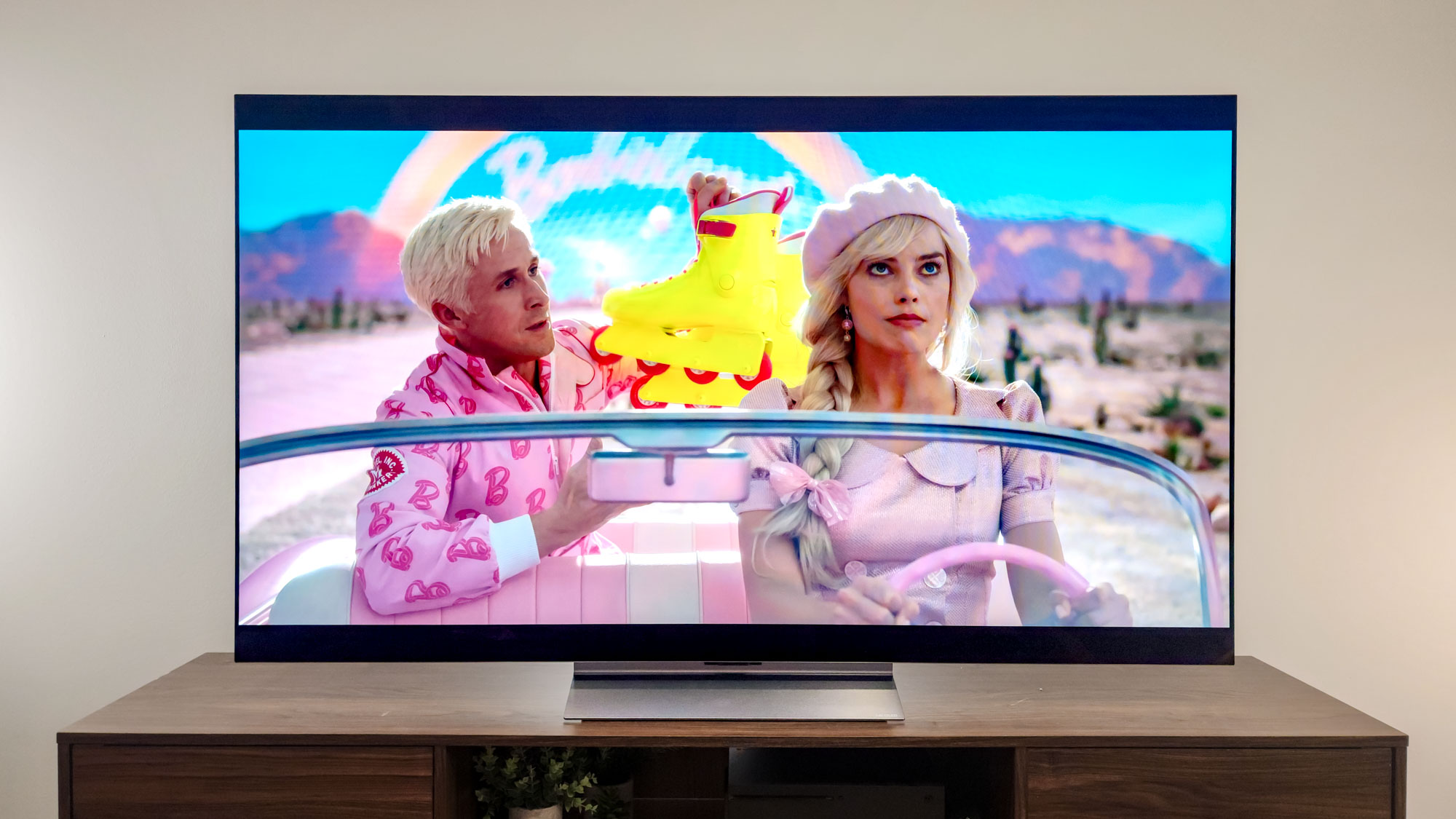
Before we ponder the overall performance on offer with these TVs, let's check out their test results to see how they stack up in a side-by-side comparison.
| Header Cell - Column 0 | LG C5 | TCL QM8K |
|---|---|---|
SDR Brightness (10%, in nits) | 344 | 249 |
Delta-E (lower is better) | 1.2 | 2.7 |
HDR Brightness (10%, in nits) | 1,179 | 4,437 |
UHDA-P3 Gamut Coverage | 99.45% | 97.28% |
Rec. 2020 Gamut Coverage | 76.18% | 80.11% |
Input latency (milliseconds) | 9.1 | 13 |
There's a lot to consider when looking at these two TVs side by side in terms of metrics.
The elephant in the room is brightness, which OLED TVs tend to lack. You can see here the C5 beats the QM8K in terms of SDR brightness, by just about 100 nits, but the Mini-LED TV blows the OLED out of the water with HDR content.
This should come as no surprise and it's definitely nothing to scoff at. The QM8K hitting over 4,000 nits in a 10% window is pretty impressive, especially when you consider its next closest rival, the Hisense U8QG, tops out at 3,916 nits.
But better brightness isn't what's selling TVs. Overall picture quality is the big ticket item, and the QM8K definitely will suffer when it comes to shadows and highlights. While we didn't note any blooming concerns on the QM8K, a real letdown was viewing angles, a problem that plagues most Mini-LED TVs.
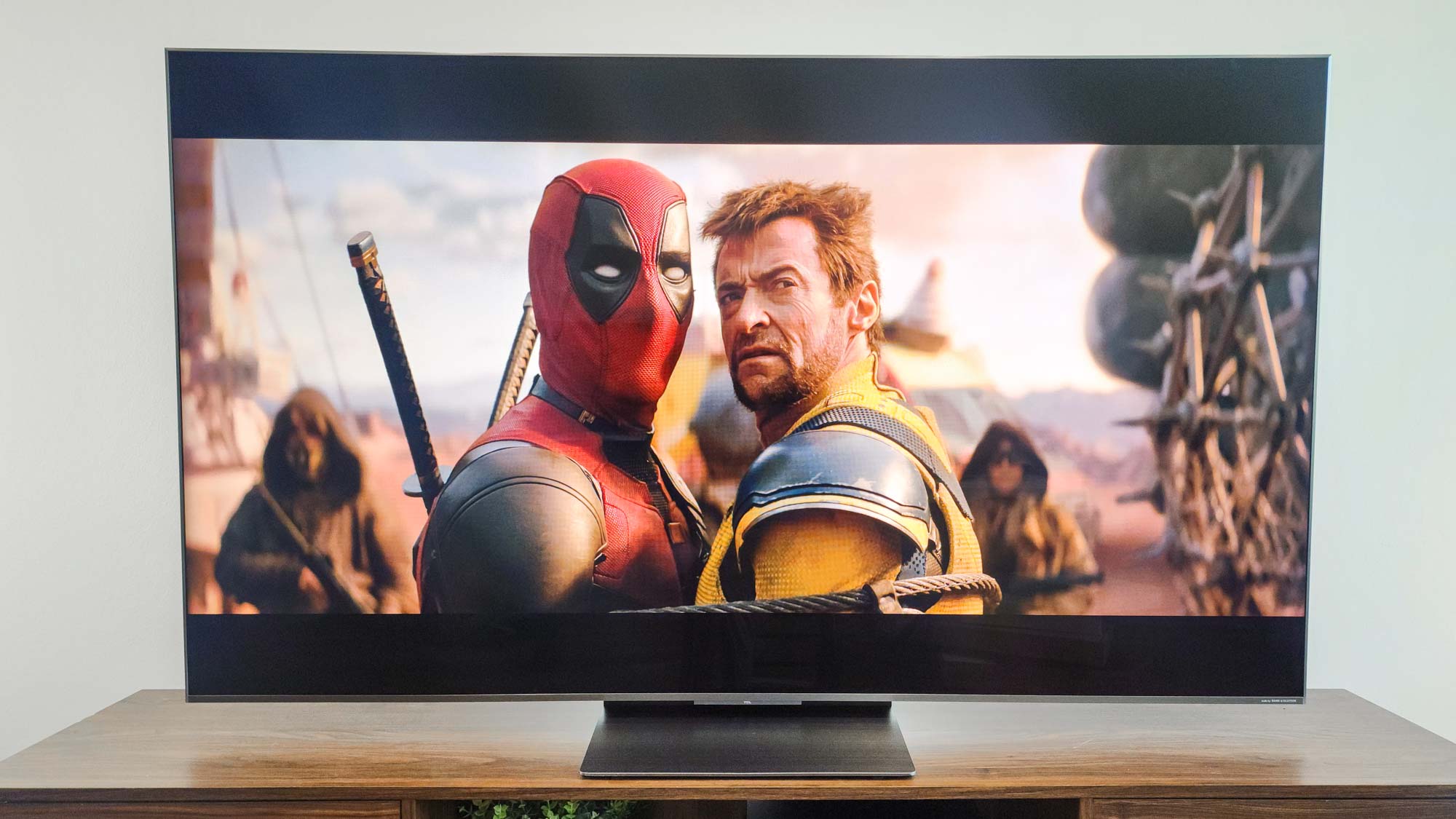
If you're wanting richer blacks and finer details in darker environments, the LG C5 is definitely the one to go with. It also has incredible upscaling thanks to its Alpha 9 Gen8 processor, which can boost 720p to 4K with minimal artefacting.
Overall, it's simply hard to beat an OLED in the picture performance game. The QM8K definitely has some strong performance metrics and its brightness in HDR is some of the best we've ever tested, but the LG C5 is just too hard to topple with its inky blacks and improved contrast.
Winner: LG C5
LG C5 vs TCL QM8K: Smart platform and features
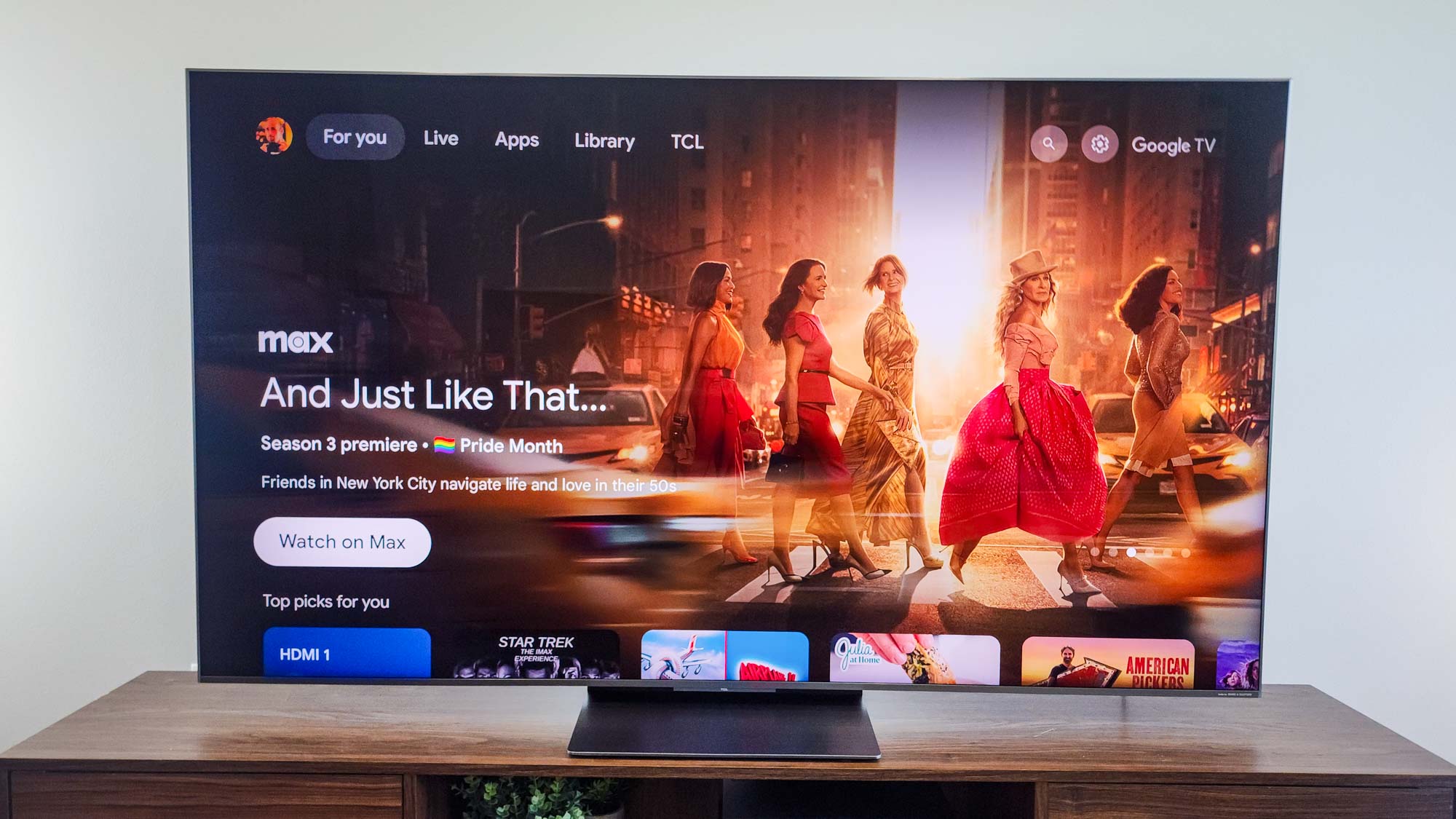
In the world of smart TV platforms, Google TV tends to reign supreme. It offers an incredible list of features, many of the best streaming services, in tandem with tons of free channels to enjoy. It's genuinely hard to beat.
But LG's webOS has seen some major enhancements. While game streaming is still in its infancy, having easy access to Xbox Game Pass and Nvidia GeForce Now through webOS is a huge win in my eyes.
No matter which interface you end up choosing, you will have to deal with ads. It's important to note that LG is taking some steps to make webOS even more debilitating (and frightening) to use with ads served dictated by your emotions, but we're not quite there just yet.
For now, LG's webOS is a worthy compromise if you're hankering for a new OLED screen. Even if it's not up your alley, you can always tack on one of the best streaming devices, like a Roku Ultra, but given how snappy and easy-to-use webOS is, you might be fine living with webOS (for the time being).
What you might not be willing to live without is an ATSC 3.0 tuner. LG's axed the spec from its lineup since 2023, meaning none of its newer models have access to NextgenTV and 4K broadcasts. The TCL QM8K, on the other hand, does have one, so if you've got an antenna and want to watch live 4K TV, the Mini-LED TV might be the better pick.
Winner: TCL QM8K
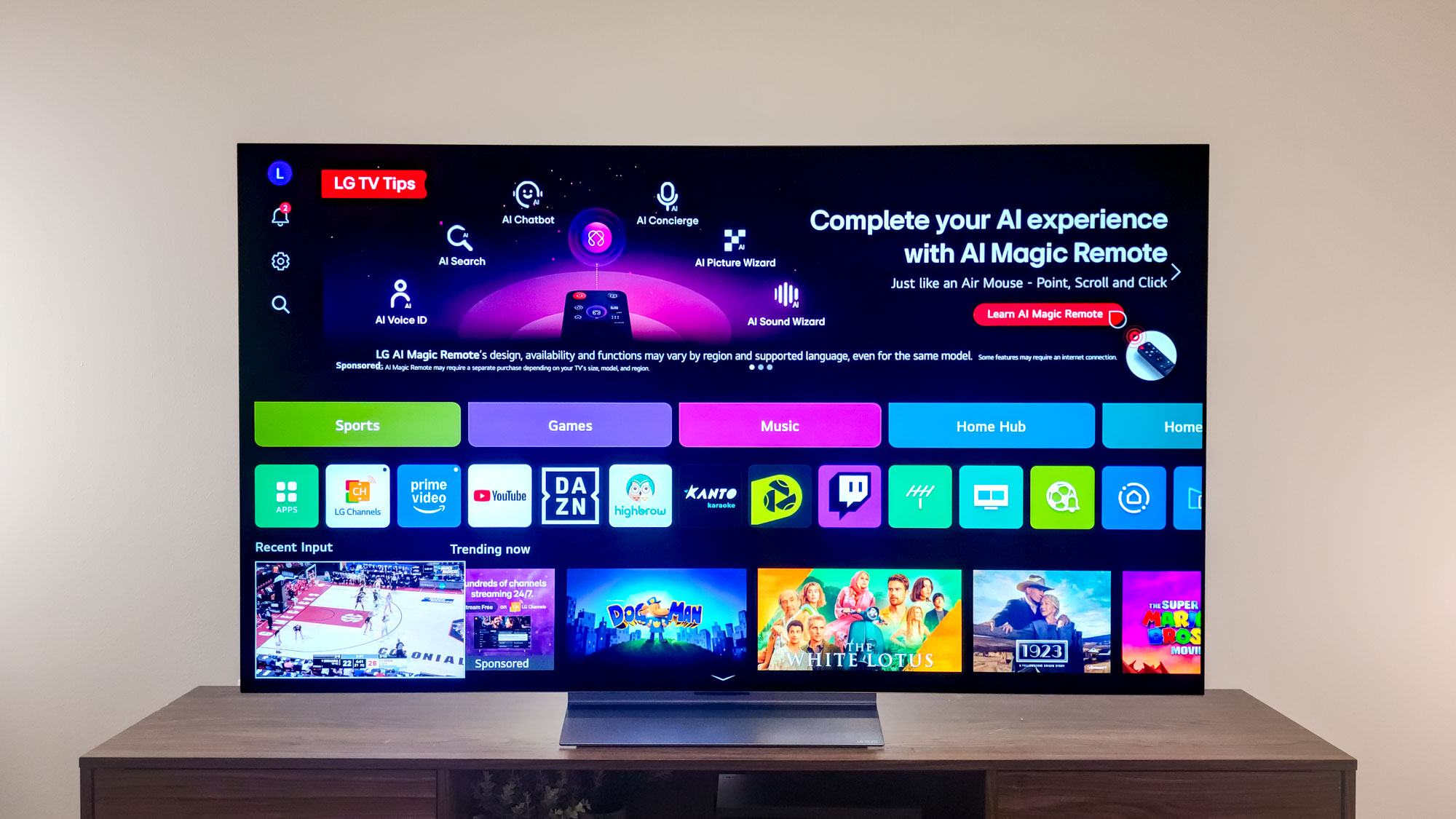
LG C5 vs TCL QM8K: Gaming
You really can't go wrong with either TV when it comes down to gaming. While neither option here has that 165Hz refresh rate seen on several other 2025 models, their 144Hz support is more than enough for most gamers, especially when modern consoles top out at just 120Hz in 4K via VRR.
If you're planning on running a PC with your TV for gaming purposes, I'd recommend going with the QM8K. Unlike other TVs, it lets you drop the resolution to reach higher refresh rates, in this case 288Hz at 1080p. It's highly unlikely you'll find any games that run anywhere close to that, but it's an option if you're willing to sacrifice resolution.
Despite the higher refresh rate of the QM8K, games will look far better when played on the LG C5 OLED. Not only are OLEDs generally better for gaming, but LG TVs tend to be the best choice for the pastime. Plus, the C5 OLED can hit a low input latency of 9.1ms, which beats the QM8K's 13ms by quite a bit.
The QM8K has some neat gaming tools and features, but I'd still be buying the C5 to get the best possible picture performance.
Winner: LG C5
LG C5 vs TCL QM8K: Outlook
| Header Cell - Column 0 | LG C5 | TCL QM8K |
|---|---|---|
Specs (25) | 23 | 21 |
Design (25) | 23 | 23 |
Performance (25) | 24 | 21 |
Features (25) | 23 | 23 |
Total Score (100) | 93 | 88 |
There's a reason we typically recommend OLED TVs over their Mini-LED TV counterparts. They simply offer the best possible picture performance in the market and come with a range of features that suit most users.
The LG C5 is the poster boy for OLED TVs. It's a value proposition that's made better each year and the price will only diminish as we continue further into 2025. While you definitely could save yourself $400 by going with the 65-inch QM8K that's $1,597 right now, I would go with the more expensive option here.
Not only is the LG C5 OLED far superior in terms of picture quality and features, but we gave it a perfect score in our official review. It's one of the few TVs we've tested so far in 2025 to get that perfect rating, and not just among OLEDs.
If price is a concern, you can always go with the 65-inch LG C4 OLED TV that's currently $1,396 ($200 less than the TCL).
Overall, the TCL QM8K is a great TV and one that delivers great performance for the price. But if you want the best possible performance, you want the C5 OLED.
More from Tom's Guide

Ryan Epps is a Staff Writer under the TV/AV section at Tom's Guide focusing on TVs and projectors. When not researching PHOLEDs and writing about the next major innovation in the projector space, he's consuming random anime from the 90's, playing Dark Souls 3 again, or reading yet another Haruki Murakami novel.
You must confirm your public display name before commenting
Please logout and then login again, you will then be prompted to enter your display name.
